Let’s play a game. What do you see if I ask you to imagine spending time in Italy? Where are you? What are you doing? I’d guess that nine times out of ten, you would be living an Italian summer dream.
Italy lives in the summer in our collective imagination.
Sunny beaches, seeking respite from the heat in the cool water of a fountain in a piazza surrounded by ancient, elegant buildings, riding a Vespa along sinuous white roads—all while wearing a floral dress. Crowded beach lidos, bowls of spaghetti con le vongole, sipping an espresso or an aperitivo on a sunlit terrace, a Caprese salad with a shower of fresh balsamic basil leaves, an evening passeggiata while enjoying a gelato, wedges of crisp watermelon on a white linen tablecloth with patches of sunlight filtering through the branches of an olive tree, and tomatoes—plenty of tomatoes.
A couple of years ago, there was even a TikTok and Instagram trend, the Tomato Girl aesthetic. It is a romanticized, Mediterranean-inspired style that embodies effortless summer beauty and a laid-back, sun-kissed lifestyle, all infused with vintage vibes from the ’50s and ’60s. Rooted in imagery often associated with coastal Italy, it evokes a sense of nostalgia and simplicity. Imagine movie stars like Sophia Loren and Monica Vitti, dreamy Italian summer destinations like the Amalfi Coast, Sicily, or Tuscany, cobblestone streets, seaside villages, and markets overflowing with fresh produce, complete with the quintessential wicker basket. If it were a movie, it would be La Dolce Vita or Call Me By Your Name.
This trend also contributed to bringing hordes of tourists to Italy, all searching for the perfect summer vignette.
I also searched for "Italian aesthetic" on Pinterest, and guess what I found? The first three photos featured the Italian Riviera, a girl reading a book on the beach, and a bowl of spaghetti perfectly matching the colors of a lido sun umbrella.
It’s not just online storytelling, though. If you asked me to think of the most representative Italian food, my mind would immediately rush to a bowl of ripe tomatoes drenched in the late afternoon sun or a slice of bread drizzled with extra virgin olive oil. Oh my! My thoughts naturally align with the Tomato Girl aesthetic.
Even though I admit that summer food tends to be my favorite, I cannot resist the charm and comfort of a bowl of ribollita—thick, heartwarming, and sustaining—or the invigorating bitterness of a radicchio and blood orange salad, a feast for the eyes and the taste buds.
There is magic, charm, and a fair share of romanticization in the Italian low season, or in winter, too.
Today’s goal is to create a different imaginary with ten vignettes from Italy in the low season. I also asked friends and colleagues to chime in and help me paint ten vignettes of Italy in its quieter months. If we all take part in crafting a new narrative of Italy—under the rain, wrapped in thick fog, beneath a bright, clear winter sky, or during a coastal storm—we will contribute to creating a broader, less obvious, more unique, and captivating picture of the country.
I realized I needed to write about Tuscany—and, by extension, Italy—in the low season one late afternoon in Siena, under a thick rain. I was walking along empty streets, the cobblestones dark and glistening, reflecting the soft glow of shop lights. It was my father who introduced me to this quiet, insider’s joy of Siena. He had spent part of his high school years here, and when I started university in Siena, he shared this little secret with me: be sure to enjoy the magic of Siena in the early evening, under the rain.
I want to give you access to this understated Italian magic, so you can have a small taste of what it truly feels like to experience it for yourself.
These vignettes are just glimpses of Italy in the low season—a season full of charm, beauty, and flavors that deserve to be celebrated just as much as summer’s abundance.
Have you ever experienced Italy in the winter? I’d love to hear your stories!
10 vignettes of Italy in the low season
1. An Italian food market in winter
The market stalls are piled high with bunches of purple and dark green spiky artichokes, some of their leaves scattered on the ground as if from a battle scene. Next to the artichokes, an array of green, bitter leaves—chicory, puntarelle, dandelion greens, broccoli rabe, escarole, and Tuscan Lacinato kale—displays all shades of green, each with a different degree of bitterness.
Radicchio takes center stage, its leaves resembling delicate flowers rather than a head of salad: the curly purple and creamy white leaves of radicchio tardivo are arranged next to radicchio variegato, its wide, slightly wrinkled, cream-white leaves evenly speckled with purple, and radicchio rosa, prized for its soft, rosy-pink leaves and mild, slightly bitter flavor.
Citrus fruits dominate the scene in the fruit section: the last clementines, sweet and seedless—therefore especially loved by kids—the large globes of Navel oranges, sweet and juicy, my favorites, and the blushing Tarocco oranges, the Sicilian blood oranges, perfect for salads and juices.
The smell of spit-roasted rotisserie chicken fills the air, while the cheesemonger spoons creamy Gorgonzola onto thick slices of bread for everyone to taste.
Gone are the days of the piercing smell of ripe melons and the pop of red from tomatoes, which once occupied half the stall in every shape and size. Yet, I love the intimate, unpretentious joy of a winter market, where the bitterness and clean taste of seasonal vegetables counterbalance the richness of the comfort food I cook at home.
2. The thick mist of Volterra
Make your way to Volterra on a Saturday morning in winter. Step inside Palazzo dei Priori, the oldest town hall in Tuscany, and climb the tower to peer through its small windows. More often than not, you’ll find Volterra shrouded in dense, mysterious fog—one of its most captivating features. The warm hues of the bricks blend seamlessly with the thick white mist, while below, the vibrant colors of the bustling market bring the town to life.
It’s no surprise that in the Twilight series, Volterra was chosen as the ancient Italian city where the Volturi, a lineage of powerful vampires, reside.
A former mayor of Volterra once told me that he was often stopped by tourists asking if the fog was somehow placed intentionally in the town’s narrow back alleys—such was the eerie charm it lent to this medieval city, whose history stretches back to Roman and Etruscan times. The Etruscans themselves, an ancient civilization that flourished in central Italy between the 8th and 3rd centuries BCE, have intrigued scholars for millennia.
You can still breathe in the mystery and magnetism of Volterra on a winter’s day—one of my favorite towns in Tuscany to visit in every season, but especially in winter.
3. Siena rice fritters in Piazza del Campo
The Sienese people, university students, and the few tourists who, at this time of year, find themselves wandering through the city’s shadowy back lanes, usually tuck their hands deep into their pockets for warmth and hide their faces in woolen scarves to shield themselves from the biting cold.
The sun struggles to reach the narrow alleys between the medieval buildings, leaving them in perpetual shade. People walk briskly, everyone with a purpose: friends to visit, errands to run, or appointments that simply can’t be postponed.
Then, suddenly, you emerge into Piazza del Campo. The view opens up to reveal the unique, shell-shaped square, embraced by red brick buildings. The sun finally breaks through, and with it comes an unexpected aroma.
From mid-January until March 19th, the feast of St. Joseph, the crisp winter air carries the scent of fried dough and sugar. This festive fragrance comes from the rice fritters stall—a wooden, mountain-like hut that appears in the heart of the Campo for just a few weeks each year, selling what I consider the most delicious rice fritters in the world.
On these cold days, you find yourself waiting in line outside the stall, standing close to strangers for warmth. When your turn arrives, you smile and ask for two or three euros' worth of fritters, small change already in hand to avoid fumbling through your purse.
Inside the stall, pastry chefs fry an endless stream of fritters in giant pans set atop what looks like ancient cauldrons. With practiced speed, they drop the fritters one by one into the sizzling hot oil, their movements honed by years of experience and the ever-growing queue of eager customers.
Finally, the fritters emerge, coated in caster sugar and wrapped in a crisp white paper cone. It’s time to remove your gloves, defying the winter chill, and reach into the bag to grab a warm, sticky fritter.
Though still piping hot, they must be eaten immediately, savoring the crispy shell that quickly gives way to a soft, smooth, and impossibly light rice center.
4. The Enchantment of Northern Italian Winter, by , author of and
The two little boys run ahead, shrieking with joy as they enter the open meadow. Behind, we grown-ups are still huffing and puffing up the forest path made of ancient stones fit together like an uphill jigsaw puzzle. We boost our pace to reach them and marvel at the surprise of a snow-covered clearing and tiny frozen pond. A lone, majestic, leafless elm dwarfs the children, already slipping happily on the ice, while a white horse stands nearby. Everything is cold icy breath and laughter.
This is Lake Como in January. The steep mountains ringing the lake hide centuries-worn trails that wind up and through the forests. Dotted amongst the footpaths are baite, or mountain huts.
Our destination is one of these, a small single-story wooden hut at the other end of the meadow. We tromp towards its beckoning warmth and smoking chimney, pushing open the creaking door to intoxicating aromas of sautéing butter, melting cheese, and wood-burning fire.
Here, the rustic northern Italian cucina reigns, and winter is the best moment to feast on traditional dishes, such as cheesy pizzoccheri pasta and buttery polenta uncia as they were meant to be eaten, after a brisk mountain walk beside a crackling fire. And so we do.
5. The fanove in Puglia, by , author of
If I had to choose a scent to describe winter in Puglia, it would be the smoke of burning olive wood rising from the chimneys of old towns. A smoky aroma mingles with the earthy scent of dew-covered stone pavements and the soapy freshness of Marseille soap from laundry hanging out to dry.
January, after the olive harvest months, is the time for pruning. Unproductive branches are cut to give light and air to the trees while providing wood to warm the winter nights. In Puglia, this is also the season of bonfires, which in January take on a special meaning: a propitiatory ritual to welcome the start of the new agricultural year.
In Castellana Grotte, on January 10th and 11th, the fanove light up the town in honor of the Madonna della Vetrana, protector against the plague. Large bonfires blaze in squares and countryside, as the community gathers to share food and traditions: hot fritters, zampina sausages, caciocavallo impiccato, and local wine.
Sparks fly upward into the sky, carried by the wind, mingling with the lingering smoky scent of olive wood—a sensory reminder of the warmth and magic of winter in Puglia.
6. Carnival in Sardinia, by , author of
It’s winter in Sardinia, but nothing truly sleeps. Right after Epiphany, Cagliari is filled with a scent that warms the season: the sweet, fried aroma of zeppole cagliaritane, soft spirals made of durum wheat semolina and saffron, sometimes enriched with fil’e ferru, the once-illegal island brandy. This soft dough is best enjoyed hot, while strolling through the city center, as the air shifts between sharp gusts and rays of sun that beckon toward the Poetto waterfront at the foot of the Sella del Diavolo.
Meanwhile, the heart of Sardinia echoes with ancient sounds. Starting on January 17 with the fires of Sant’Antonio Abate, the island announces Carrasegare, the carnival: cowbells rumbling like thunder through the mountains, grotesque masks dancing with the earth and mystery. Here, the boundary between man and nature vanishes in a ritual that celebrates the untamed rural spirit.
7. An Abruzzo vignette, by , author of
My two favorite seasons in Abruzzo are late fall, right after the grape and olive harvests, and late winter, just before spring breaks. The foothills of the Apennines are often veiled in fine mist, the air is chilly and permeated with the perfume of wood smoke. I pick a town in the distant hills, towards the mountains, possibly one I have not been to before, get in my car, and drive. There are so many villages in Abruzzo, cut from stone or crafted from bricks, stunning villages with quiet streets, residents congregating in the piazzas, and lights beckoning from an open coffee bar or restaurant.
On one of these forays, traveling the back roads from my house in Penne, I eventually find myself at La Lanterna, in Castiglione Messer Raimondo. As its name implies, this small bar, painted yellow and situated on the edge of a long piazza, is like a beacon. Out back, a mozzafiato view of the hills for as far as the eye can see. Inside, I find it is much more than a place to get coffee or a drink, with a collection of casual tables for dining beneath a vaulted ceiling. On the menu, traditional Abruzzese fare—gnocchi al sugo, spaghetti alla chitarra, and, if you’re lucky, scrippelle ‘mbusse—delicate rolled crêpes in broth, all prepared by the owner’s mother. For me, the quintessential Abruzzo experience.
8. Winter in Rome, by , author of
Winter is the secret season in Rome. It’s the only time of year when the city isn’t completely inundated by crowds of tourists; plus the weather is usually quite mild. When the sun is shining, it’s nice to spend time outside and admire the way the soft light illuminates the church domes and marble fountains, casting a golden glow.
I love when people visit in the winter and I can show them places they might otherwise miss. My favorite place for a leisurely stroll is Via Margutta, the cobblestone street between Piazza del Popolo and the Spanish Steps that was known as the artists’ street. I like to point out the building where Fellini lived, then walk past art galleries and design stores, pausing to admire the building where some scenes in Roman Holiday were filmed, before stopping by Il Marmoraro to say hello to Sandro, who still carves marble plaques by hand just like the ones his father, who opened this little shop in the 1960s, did. In the winter, when the city is quieter, locals like Sandro are more relaxed and happy to take a few minutes to chat.
9. The Wild Beauty of Winter Storms along the Ligurian Coast, by , author of
In Liguria, the sea often transforms into a powerful, captivating force during winter. Storms from afar send waves pounding against the rugged coastline with primal energy. The air is thick with salty mist and the sharp scent of the sea, while the roar of the waves rises and falls in sync with your heartbeat.
The water shifts through endless shades—grey, green, deep blue, purple. The surface of the sea is a living, breathing work of art, changing from moment to moment.
On empty beaches, peacefulness stretches as far as the eye can see. Waves crash, wind whistles, and pebbles roll underfoot. The scent of salt lingers in the air, blending with rosemary, pine, and wild herbs growing on the rocks. A gentle swipe of your tongue, and you taste the sea—its raw flavor, a reminder of the wild forces that shaped this coast.
Here, far from the rush of daily life, the sea’s rhythm clears your mind. Surrounded by nature’s power, you’ll find a new kind of relaxation that refreshes your spirit and invites you to slow down, breathe deeply, and simply be.
In winter, the Ligurian coast isn’t just a place to visit—it’s an experience that stirs the soul.
10. A January Morning in Campo Santa Margherita, by , author of
Early January is my favorite time to be in Venice. Often cold and bright, there's an energy in the air—an anticipation for the Carnival and an equal relief in seeing the festive season gone for another year.
On a clear morning, when the light is sharp and dazzling (bring sunglasses), I like to stroll to Campo Santa Margherita. One of Venice’s larger open spaces, the campo feels generous and uncluttered at this time of year, like the city itself is breathing deeply once the rush has passed, if only for a short time.
From where I stand, on the northern tip of the campo, I can see everything that’s going on—a wide, open view of a small universe.
Locals trickle in and out of the few open cafés, their voices blending with the clatter of espresso cups and the hiss of a milk steamer.
Street cleaners, gli spazzini, gather outside a bar, gulping down tramezzini and orange-colored spritzes—early rewards for hours spent sweeping the calli, the narrow streets of Venice, since the break of dawn.
Further down the campo, market stalls are just beginning to wake up. Fishmongers arrange their catch on crushed ice: gleaming sardines, inky squid, and crates of blue crabs fresh from the lagoon.
Permed ladies clad in furs march with intention toward the pharmacy, while professors from the local university rush left and right as exam season begins.
I’m busy, too, this morning - on my way to grab a frittella, the carnival doughnut Venetians adore. Sugar-dusted orbs enriched with citrus, pine nuts, and raisins, or filled with custard and zabaione.
A few years ago, I could've popped into the baker shop at the corner - a fixture for the local community. But now that it's gone - swallowed by yet another forgettable restaurant, I have no choice but to walk the whole length of the campo to the only remaining bakery. So I set off southward, past the trees, the wells, and the benches. The fish stalls, infested by seagulls, and the old executioner’s house. I take a turn left, then one right, the scent of fried dough guiding me forward.
Finally, I make it into the bakery, where large trays of golden fritters are being piled high everywhere I look. I order one. The pastry feels warm in my cold hands. I bite into it and end up with a mustache of sugar. I like that it’s crisp and tender, spongy and chewy, sugary and rich. All at once. And for a brief moment that stretches endlessly like a lazy red cat, the whole world stands still, in perfect sweetness.
I finish my frittella and brush a million sugar granules from my fingertips, reluctant to leave. I really shouldn’t get another one, but I give in - the only way to muster up the courage to step out into the chilly air is with a frittella in your pocket.
As the morning slips toward noon, the campo grows a little livelier. Students begin to gather, their voices quick and bright as they discuss exam schedules and weekend plans.
A waiter wipes down tables in preparation for lunch, glancing up at the sky as if gauging whether to leave the outdoor seating out a little longer.
The sun, still low, turns the crumbly, plastered walls a warm honeyed hue, and the shadows shorten, softening the sharpness of the early light.
I move on with my day, cross the nearest bridge, and wave the campo goodbye. In a few weeks, the world will return, the city will dress up again, and the rhythm will change. But for now, for those of us who wait all year for it, a quiet Venice is the most indulgent treat.

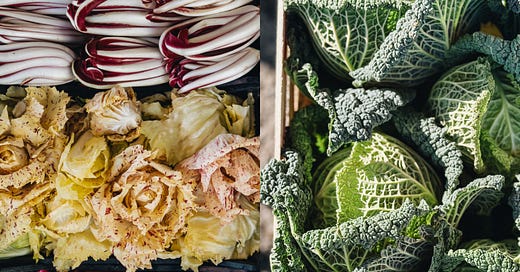
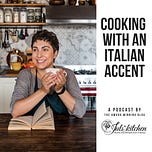




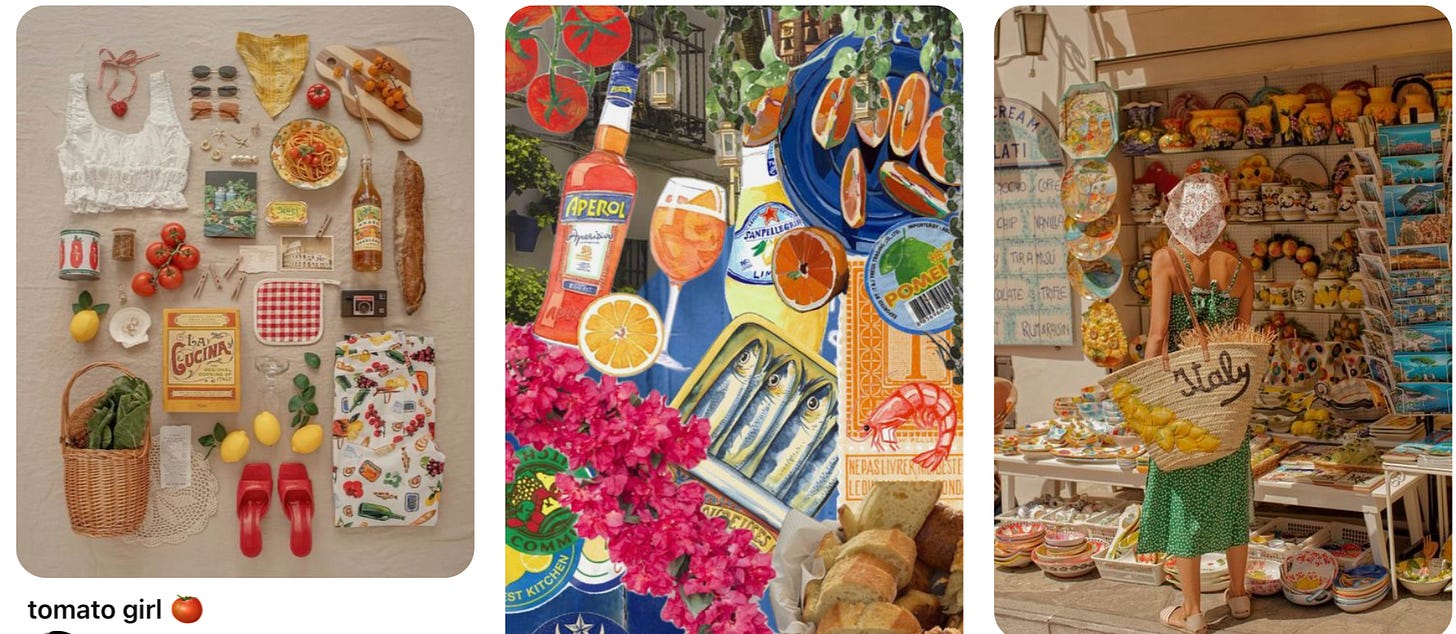
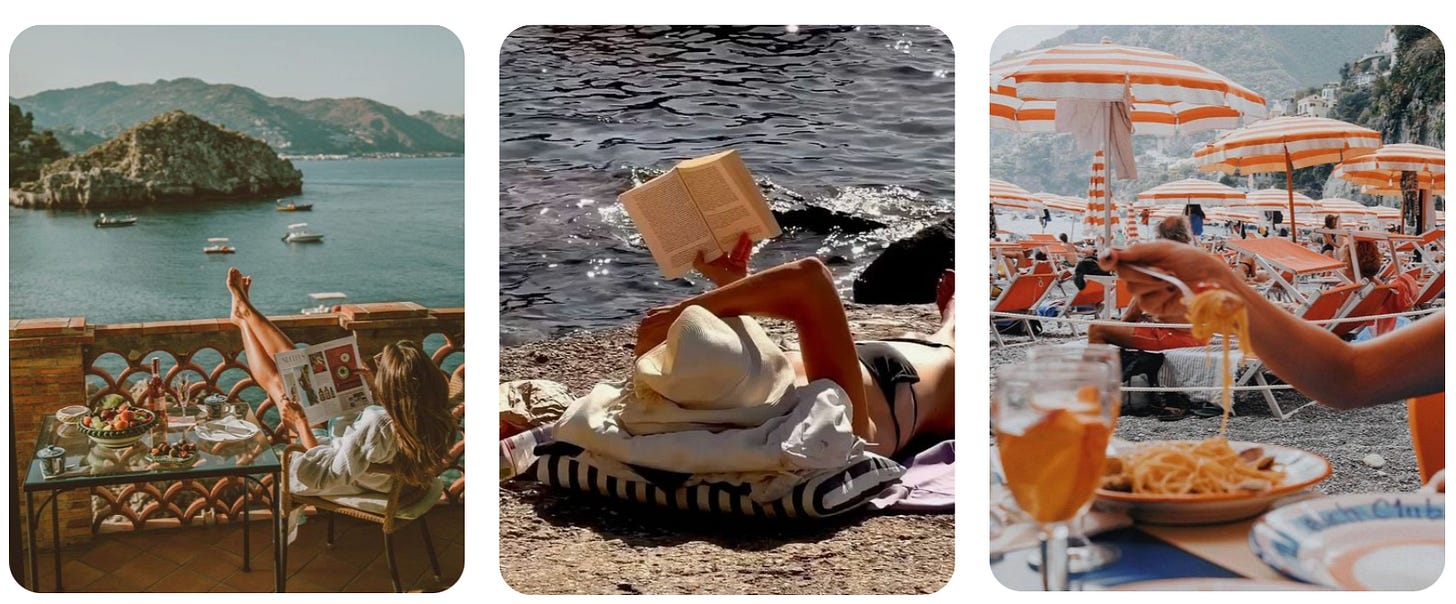










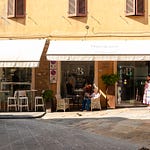

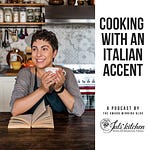


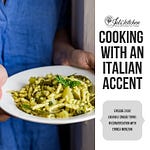

Share this post